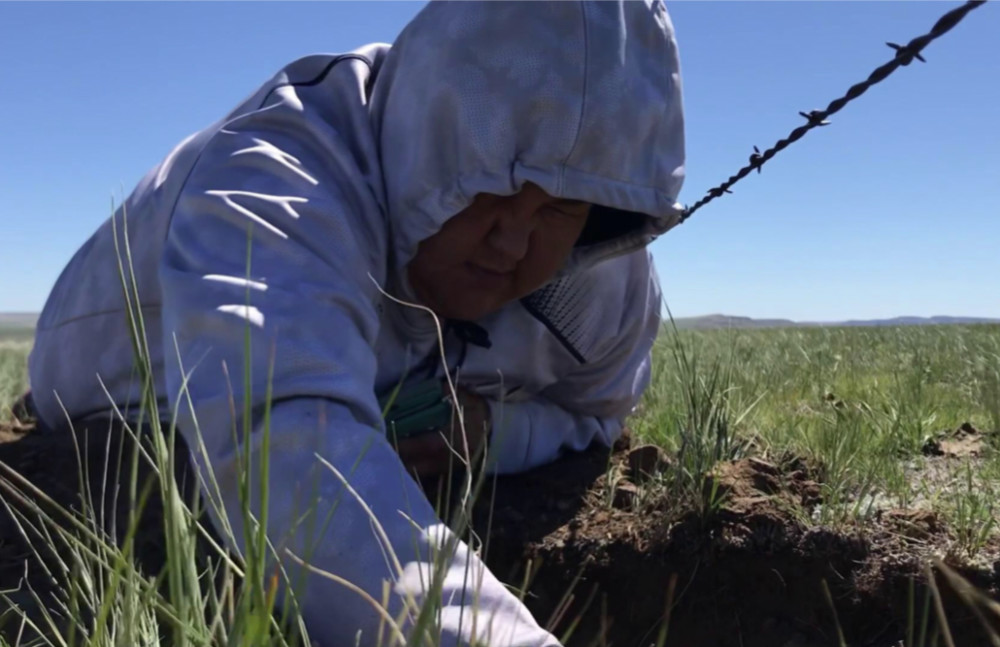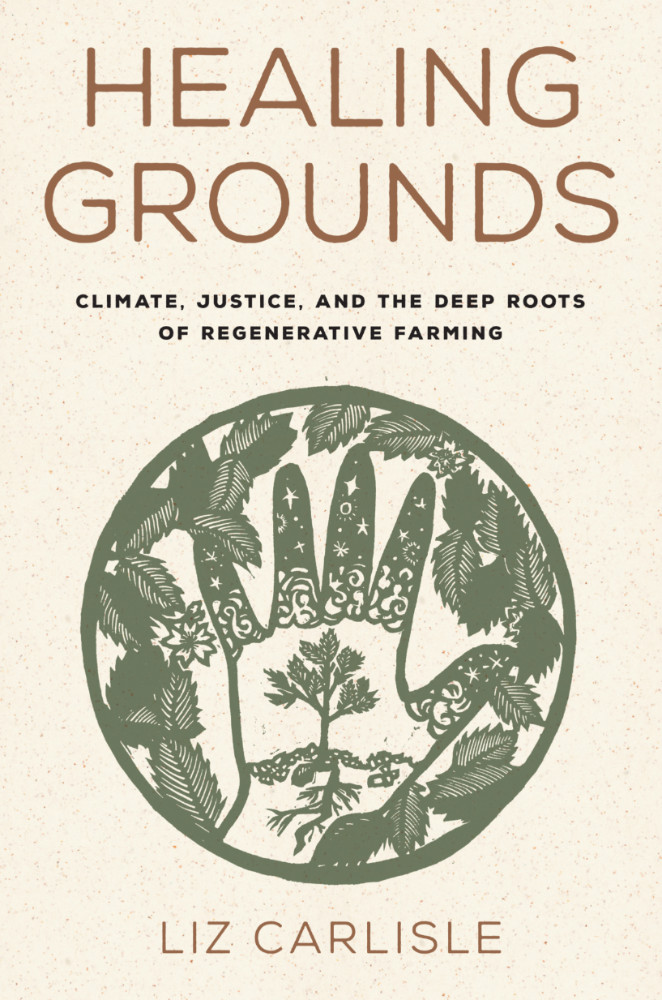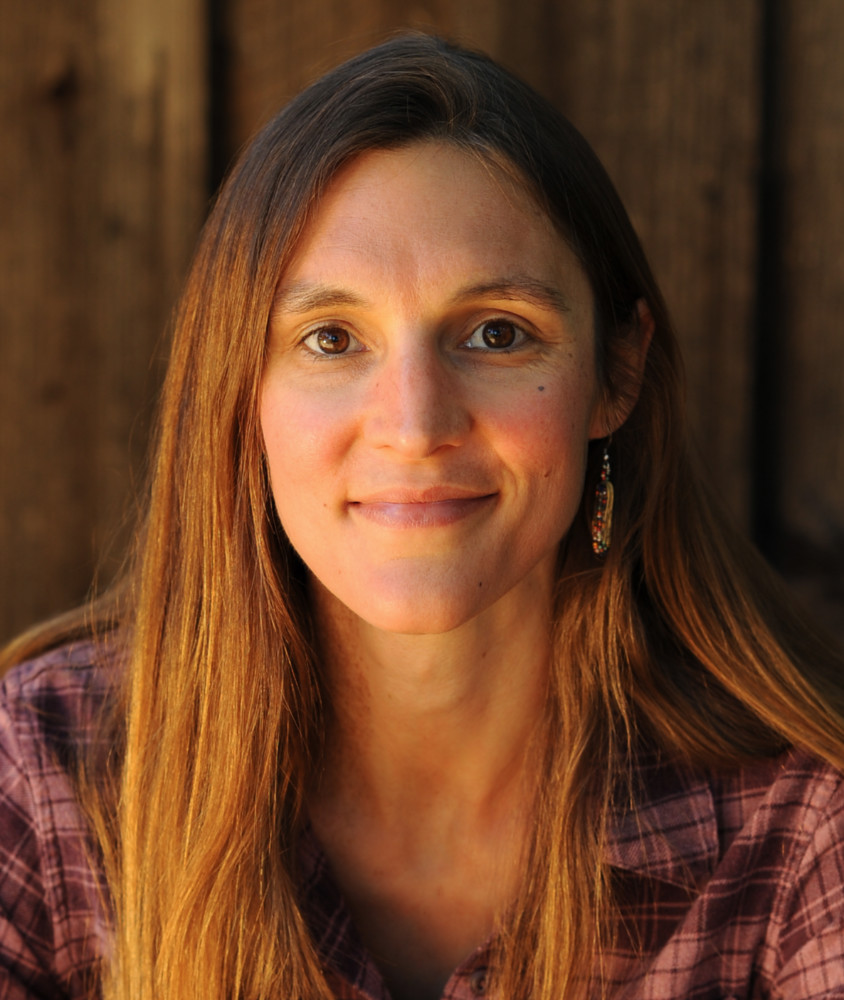
‘Healing Grounds’


The urge to do something “new” to tackle climate change can seem reasonable. After all, isn’t that what our advanced technology is for? Liz Carlisle, however, believes we need to look to the past and the communities long tied to the land.
An assistant professor in UC Santa Barbara’s Environmental Studies Program, Carlisle lays out her prescription for saving the planet in her new book, “Healing Grounds: Climate, Justice, and the Deep Roots of Regenerative Farming” (Island Press, 2022).
As Carlisle notes, carbon building up in the atmosphere is killing Earth. Exotic solutions like geoengineering and direct air capture would remove/sequester some of that CO2, but it won’t be enough. She says we should look down for a potentially significant solution: the earth below our feet.
Although most people assume carbon is captured in flora, such as trees, Carlisle says that soils hold three times the carbon found in all the plants on Earth.
“This soil ‘carbon sink’ is also three times larger than the amount of carbon currently in the atmosphere,” she writes. “And there’s good reason to think that, with the help of plants, our soils could be holding even more carbon. A lot more.”
How to do that? As Carlisle sees it, regenerative agriculture: a set of practices — composting, using cover crops and more — that not only improve and restore the soil, but store significantly more carbon.
It’s a position not held by all researchers, and estimates of its potential to draw down emissions vary widely, she said. Some scientists believe regenerative farming could offset as much as 20-35% of human-caused emissions, while others believe emissions reductions from scaling out these farming methods would be negligible at best. But not all regenerative agriculture is created equal.
“The more modest forms of regenerative agriculture that are the easiest for current industry to implement,” Carlisle said, “such as reducing tillage or applying compost without fundamentally shifting cropping systems, will not capture enough carbon to make a significant difference, nor do we have any guarantee that carbon will remain in the soil.
“However,” she continued, “in my mind, the word ‘regeneration’ implies a more transformative shift: from an extractive agriculture to a reciprocal relationship with land. This shift, which requires social and cultural change as well as technical changes to the way we grow our food, is one of the most powerful strategies I know of for capturing carbon and rebalancing the climate.”
That “shift” is at the heart of “Healing Grounds.” In researching regenerative agriculture she came to understand that it’s not a new idea, and that Indigenous people have been practicing it, in many cases, for millennia. What’s more, colonized people of color are working to implement, in their new lands, the regenerative farming of their ancestors.
Carlisle spent time with four women — Indigenous, Latino, Black and Asian American — and saw how their work was intertwined with social and racial justice.
“Increasing the use of regenerative farming practices, like applying compost and planting soil-building cover crops is a step in the right direction toward shifting agriculture from a climate problem to a climate solution,” she said. “But the next step is recognizing that these practices are rooted in much deeper and more holistic systems of regenerative land management, systems embedded in the ancestral knowledge of Indigenous communities and communities of color.
“These communities,” Carlisle continued, “have spent hundreds of years on the frontlines of colonization and extractive agriculture, struggling to halt these harmful processes that have ultimately led to our current climate predicament and instead restore reciprocal relationships with land. Land justice for these Indigenous communities and communities of color will thus empower a much fuller realization of regenerative agriculture and its potential to heal the carbon cycle on farmlands.”
Carlisle, who research focuses on sustainability transitions in the food system, wrote the book in response to the fierce debate about the legitimacy of regenerative agriculture as a climate solution. She believes it can, but only if it’s coupled with racial justice.
“Most of the current schemes for granting carbon credits to farmers will not fundamentally shift emissions,” she said. “However, these same regenerative practices have deep roots in communities of color, where they are linked to holistic systems of caring for land that can make a real difference. Only by seriously pursuing land justice for these communities can we unlock the true potential of regenerative agriculture as a climate solution.”



